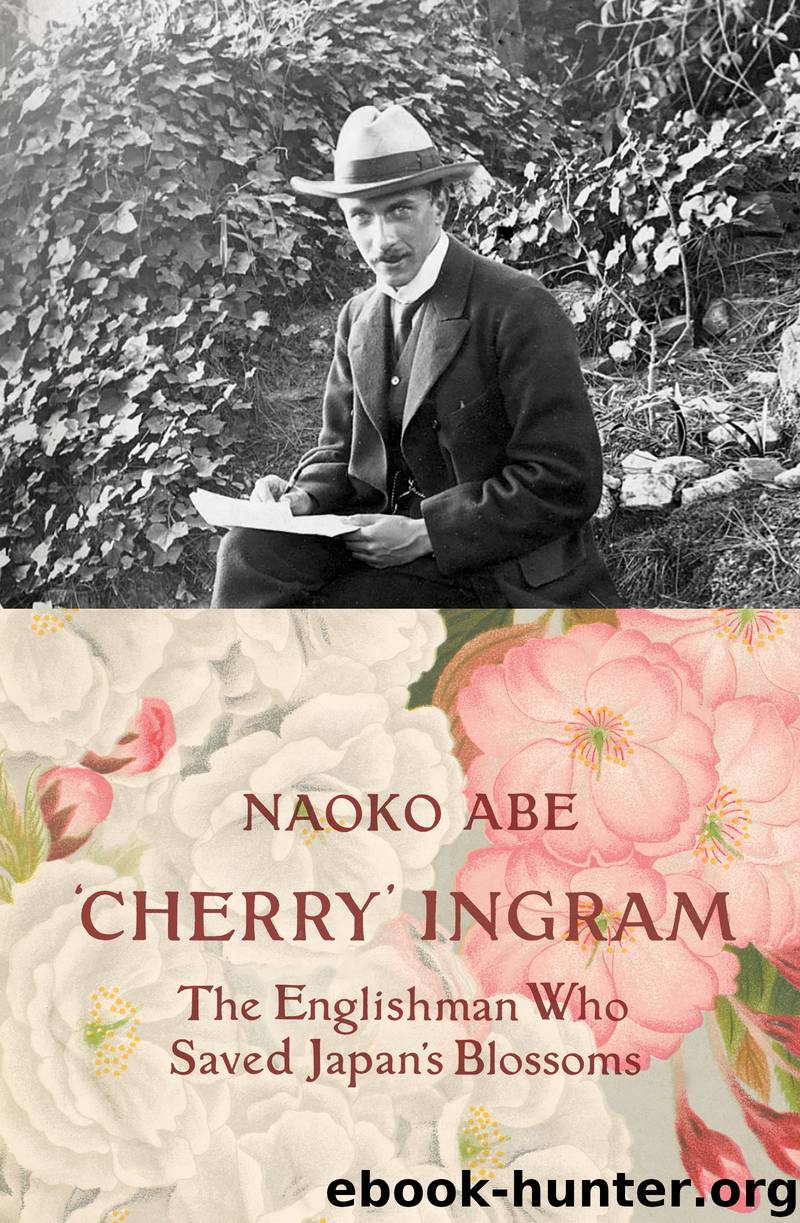'Cherry' Ingram by Naoko Abe

Author:Naoko Abe
Language: eng
Format: epub
ISBN: 9781473549067
Publisher: Random House
33. The Sakura Ideology
From the 1880s onwards, Japanese nationalists often cited Norinaga Motoori’s poem linking the cherry blossom to the ‘Yamato spirit’ as a way to connect the bushidō philosophy with the symbolism of the nation’s iconic flower. And when Nitobe wrote his best-selling Bushidō book, he noted how the cherry was ‘the emblem of the Japanese character’ and was ‘ever ready to depart life at the call of nature’.1
In the late nineteenth century the Meiji government started to incorporate images of cherry blossoms into the military,2 as well as in educational and cultural events, reinforcing the idea that a soldier should be prepared to die for the emperor like the cherry blossom. After 1870, for example, the Imperial Japanese Navy’s badge became a combination of an anchor and a cherry blossom, featuring in the insignia worn on caps, shirt collars, sleeves, shoulders and buttons. The Imperial Japanese Army also incorporated a cherry in their designs.3
The Forty-Seven Rōnin, the well-known drama about the former samurai who avenged the forced suicide of their master, also played a key role in linking the cherry with death. In the 1748 staging of the play, known in Japan as Chūshingura, loyalty to one’s master had not been the main theme. Instead the rōnins’ main purpose in that performance was to rebel against the shōgun for treating their master, Naganori Asano, unfairly. By the late nineteenth century,4 however, loyalty was increasingly being emphasised and it had become customary for cherry blossoms to be used as dramatic symbols throughout the play. In these newer iterations the play’s culmination came as Asano committed hara-kiri (ritual suicide) at the height of the cherry-blossom season and as flower petals drifted onto his body.
In fact the Forty-Seven Rōnin became so seminal to Japanese culture that the proverb ‘The cherry is first among flowers as the samurai is first among men’ became popular, after it was mentioned in the play. The proverb originally meant what it said: in the same way that the cherry is the finest type of flower, so the samurai is the finest type of man. By the 1930s, however, the interpretation had been twisted: in the same way that the cherry blooms and then falls, the warrior who fights and then dies is the finest among men. For soldiers poised for battle,5 the analogy was abundantly clear.
One man, Kiyoshi Hiraizumi,6 had more influence than most in promoting these jingoistic messages. Then Professor of Japanese History at Tokyo Imperial University, Hiraizumi gave ‘spiritual’ lectures in the 1930s to the military, police, educators and students about the ‘Japanese spirit’, in which he linked his belief in Shinto practices with cherry blossoms, bushidō and the emperor, to fashion an ideology of Japanese supremacy. In a booklet entitled Loyalty and Morality, Hiraizumi was blunt:
In case of emergency,7 we need to fall like cherry blossoms for the emperor. We Japanese have admired cherry blossoms since ancient times with this spirit. We don’t rejoice over the blossoms, we rejoice over the flowers’ falling and their heroic attitude.
Download
This site does not store any files on its server. We only index and link to content provided by other sites. Please contact the content providers to delete copyright contents if any and email us, we'll remove relevant links or contents immediately.
Call Me by Your Name by André Aciman(20350)
Ready Player One by Cline Ernest(14494)
How to Be a Bawse: A Guide to Conquering Life by Lilly Singh(7360)
Wiseguy by Nicholas Pileggi(5648)
The Kite Runner by Khaled Hosseini(5061)
On Writing A Memoir of the Craft by Stephen King(4847)
Audition by Ryu Murakami(4822)
The Crown by Robert Lacey(4710)
Call me by your name by Andre Aciman(4599)
Gerald's Game by Stephen King(4556)
Harry Potter and the Cursed Child: The Journey by Harry Potter Theatrical Productions(4428)
Dialogue by Robert McKee(4305)
The Perils of Being Moderately Famous by Soha Ali Khan(4156)
Dynamic Alignment Through Imagery by Eric Franklin(4099)
Apollo 8 by Jeffrey Kluger(3621)
Seriously... I'm Kidding by Ellen DeGeneres(3564)
The Inner Game of Tennis by W. Timothy Gallwey(3557)
How to be Champion: My Autobiography by Sarah Millican(3544)
Darker by E L James(3463)
